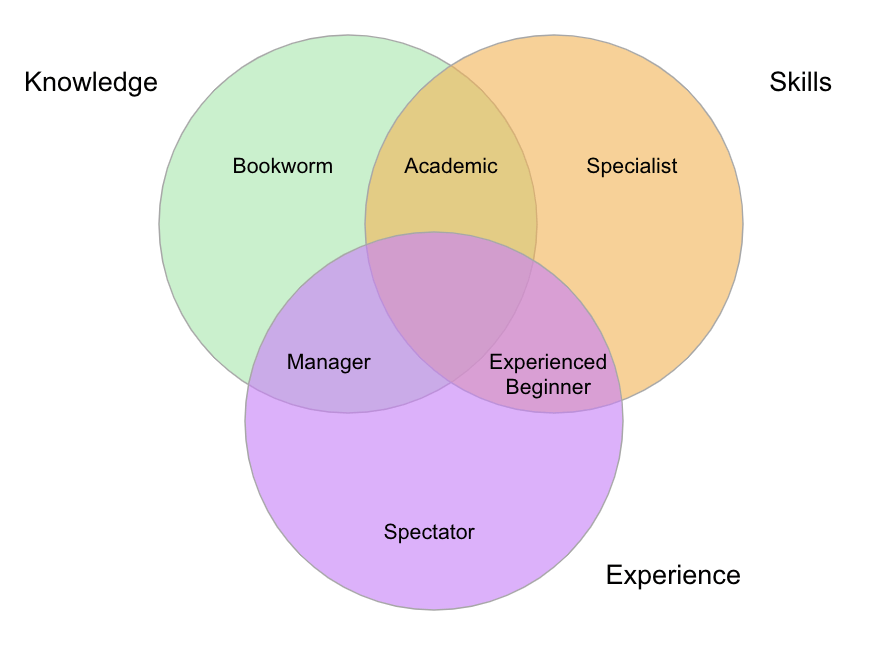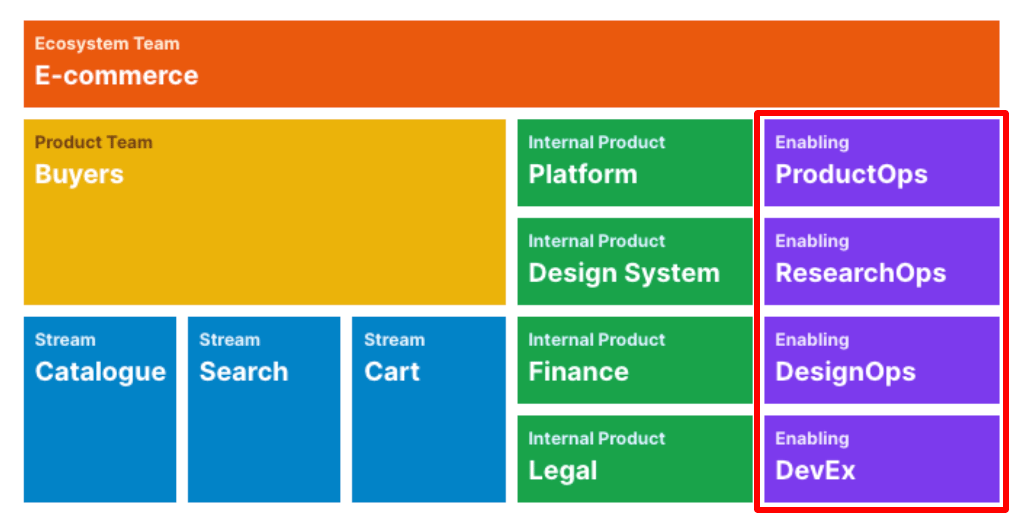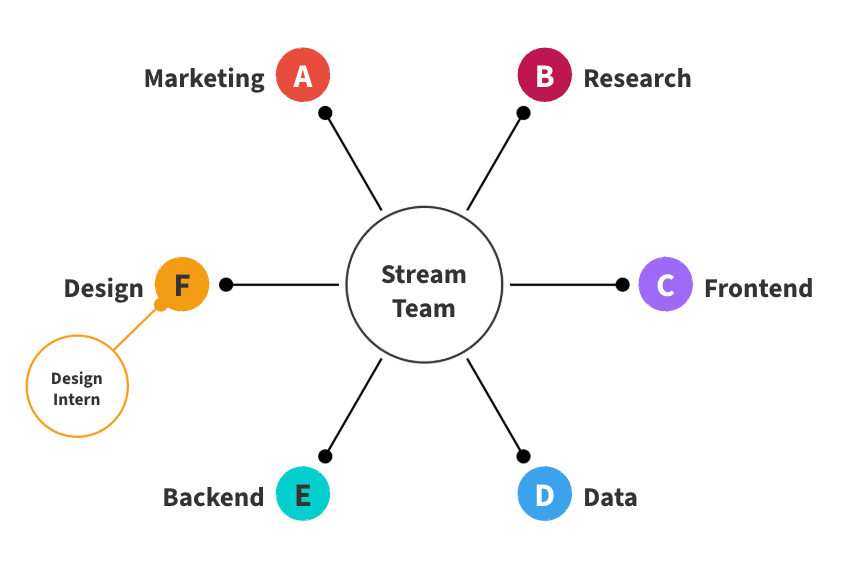- ZeroBlockers
- Posts
- Upskilling on Cross-Functional Teams
Upskilling on Cross-Functional Teams
The strength of cross-functional teams lies in their diversity of skills and perspectives. However, this same characteristic presents a unique challenge: functional isolation. With typically just one person representing each specialty, if someone lacks proficiency in a critical area, the product suffers. Worse, if the team is unaware of a skill gap, they cannot address it.
Ideally, every team member would be highly skilled in their specialisation. However, in reality, people have varying levels of expertise. In functional silos, skill gaps are easier to identify and address through mentorship and training. On cross-functional teams, with fewer functional peers for direct comparison, gaps can remain hidden and unaddressed.
The Three Pillars of Professional Excellence
Professional mastery rests on three core pillars: knowledge, skills, and experience.
Knowledge provides the theoretical foundation – understanding what a role entails and recognising various approaches to problem-solving.
Skills encompass both technical proficiency and soft competencies, from executing specific tasks to effective collaboration and communication.
Experience offers the contextual wisdom to know which approaches work best in different situations, gained through facing real-world challenges and learning from both successes and failures.
Gaps in any pillar lead to distinct challenges. The "academic" possesses knowledge and skills but lacks real-world experience, often excelling in controlled environments but struggling with practical complexity. The "experienced beginner" relies on a single approach due to limited theoretical understanding - "when all you have is a hammer, everything looks like a nail." The "manager" is rich in theoretical knowledge but lacking hands-on skills to execute effectively.

Building a Framework for Growth
Building Knowledge
Effective knowledge building combines structured learning with organic knowledge sharing. Organisations should establish formal training programs while encouraging informal learning through lunch-and-learn sessions and knowledge-sharing initiatives. Internal documentation of best practices and playbooks provides a foundation, while engagement with external experts through conferences and industry literature brings fresh perspectives.
Developing Skills
Skill development begins with clear definitions of excellence for each role. Organisations should create concrete benchmarks that guide targeted improvement. Hands-on workshops provide opportunities for practice and immediate feedback, while practical work on real projects outside one's immediate domain helps broaden capabilities. Regular peer feedback through design critiques and content reviews helps refine skills in practice.
Gaining Experience
We need to ensure that people are exposed to as many different situations as possible so that they can build a repertoire of solutions for different contexts.
Strategies for Improvement
Enabling Teams: The Foundation of Excellence
One of the most effective solutions for systematic upskilling is the creation of Enabling Teams. Teams like ProductOps, ResearchOps, and DesignOps, composed of senior functional experts, serve as catalysts for improvement across the organisation. They establish clear standards of excellence, design role-specific training curricula, and create best practice guides and templates that capture organisational knowledge. They also organise Communities of Practice to encourage cross-pollination of ideas and knowledge across teams.
Perhaps most importantly, Enabling Teams engage in "management by walking around," identifying issues teams might not recognise themselves. This proactive approach helps surface unknown unknowns – challenges or opportunities that teams might not be aware they're missing. By maintaining close connections with Stream Teams, Enabling Teams can provide timely support and guidance while ensuring that best practices evolve with the organisation's needs.

Collaborative Review and Learning
Collaborative review sessions, such as design crits and peer reviews, provide valuable opportunities for learning and improvement. Unlike traditional sign-off processes that block teams from progressing, these are optional sessions that focus on collaborative improvement and knowledge sharing. While participants may lack complete context about specific projects or features, their fresh perspective often helps question assumptions, identify unnecessary complexity, and share cross-domain insights.
Product-wide audits complement these feature-level reviews by examining the entire product ecosystem. This holistic view helps identify cohesion gaps and ensures consistent quality across all product areas. While both crits and audits face similar challenges in managing context gaps, they offer substantial benefits through diverse perspectives and cross-pollination of ideas.
Grow Experience through Reflection and Rotation
Daily retrospectives prove invaluable for continuous improvement. The key principle here is that learning comes not from doing but from reflecting on what was done. These sessions must occur close to the actual work and generate quick, actionable improvements. Teams need both the authority to implement changes and clear metrics to evaluate the impact of their improvements.
While having long-lived teams is important to build trust and shared understanding in a particular product domain, regular rotation of team members helps broaden both business and technical experience. A good rule that many companies adopt is that a person cannot be on any given team for longer than 2 years. This practice prevents stagnation and creates well-rounded professionals who understand multiple aspects of the organisation.
External Insights
While internal learning is valuable, exposure to industry-wide best practices and external experts helps teams avoid stagnation. I highly recommend the UXDX conferences as they focus on the needs of cross-functional teams (although I am biased).
Supporting New Team Members
The steps above work great for raising the bar of already self-sufficient people. But how do juniors or new staff get to that point? It is not fair, on either the person or the cross-functional team they are put on, if the person is not sufficiently skilled to contribute, whether that is because of lack of skills (juniors) or institutional knowledge (new staff). Self-learning alone is insufficient - they need structured guidance to develop their skills effectively.
A more effective solution is an apprenticeship model, where new employees work under experienced professionals and rotate across three to four teams. This approach helps them develop well-rounded skills, build confidence, and prepare to contribute independently. The length of the apprenticeship depends on the skill level of the individual. For example juniors would need longer apprenticeships, while experienced professionals might only need a week or two to get up to speed.

Anti-Patterns to Avoid
Organisations must be wary of common anti-patterns that can hinder effective learning and development.
Pull Requests & Code Reviews
Traditional code reviews, while valuable for quality control, block progress and slow down delivery. Feedback comes too late in the process, leading to rework, and the time gap between writing and reviewing code reduces learning effectiveness.
Sign-Off Processes
Similarly, formal sign-offs, particularly in areas like architecture, can lock in assumptions too early in the development process, and disempower teams - “It wasn’t my fault, I did as I was told”. These practices often scale poorly as organisations grow, creating bottlenecks and reducing team autonomy. Instead, organisations should implement forcing functions that guide teams toward good practices while maintaining their autonomy. Regular reviews and audits can then catch issues and help refine these forcing functions over time.
Conclusion
Successful upskilling in cross-functional teams requires a comprehensive approach that addresses all three pillars of professional excellence while avoiding common pitfalls. Organisations must create environments that encourage continuous learning, provide structured support for new team members, and maintain the right balance between guidance and autonomy. Through these efforts, teams can build the diverse capabilities needed to deliver exceptional results while maintaining the agility to adapt to changing circumstances.
The investment in comprehensive upskilling pays dividends through increased team capability and resilience, higher quality outputs and innovation, improved employee satisfaction and retention, greater organisational adaptability, and sustainable competitive advantage. By taking a systematic approach to upskilling, organisations can build strong, capable teams that consistently deliver exceptional results while maintaining the agility to adapt to changing circumstances.